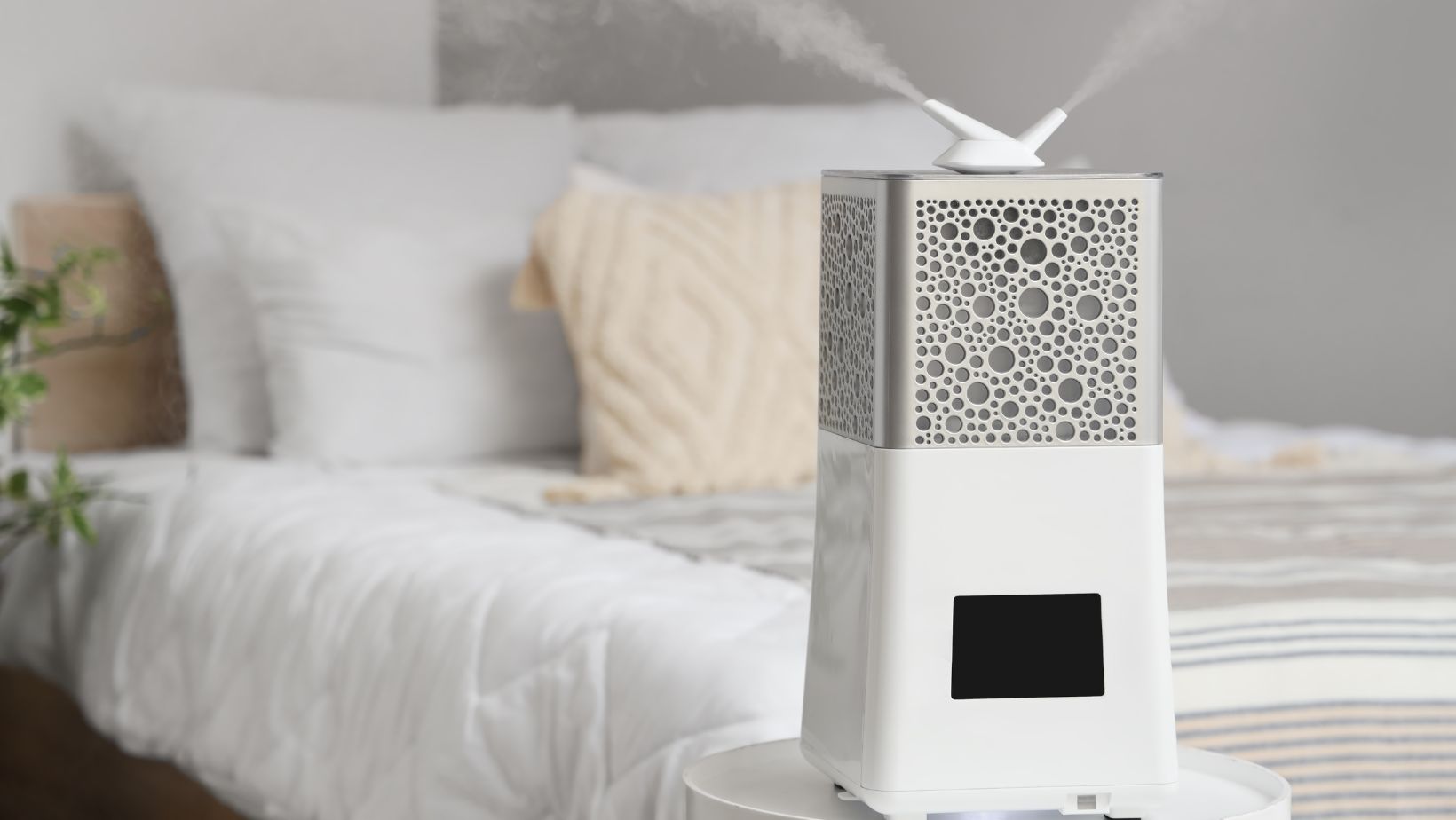When temperatures drop and we spend more time indoors, many homes slip into the same pattern: drier air, stuffier bedrooms, and that scratchy, “why does my throat feel like sandpaper?” feeling by night.
You can’t control every virus that circulates, but you can make your home and daily routine far kinder to your nose, throat, and lungs.
This guide focuses on simple, low-risk steps that support comfort and recovery – without hype or medical claims – so your household moves through the season with fewer rough nights.
Why Airways Feel Worse in Cold & Flu Season
As heaters run, indoor relative humidity often dips below 30%. Dry air pulls moisture from airway surfaces, thickens mucus, and can make breathing feel effortful – especially at bedtime, when mouth breathing is common.
Less window opening also means airborne irritants (such as dust, pet dander, and viral particles) can linger longer.
The goal isn’t to sterilize the environment; it’s to keep airway linings comfortably moist, reduce irritants, and establish a calm, repeatable routine.
Targeted Moisture vs. Room Humidity
| Aspect | Room Humidifier | Nebulized Saline |
| What it changes | Climate of the whole room | Moisture directly to the airway surfaces |
| Best use case | General dry indoor air, especially in bedrooms | Quick reset for dryness or after irritant exposure |
| Target/Range | Aim for ~40–50% RH (avoid >60% to limit mold/dust mites) | No room target – personal, on-demand moisture in minutes |
| Who it affects | Everyone in the space | One person at a time |
| Setup needs | Device + hygrometer to monitor RH | Nebulizer device + saline (per guidance) |
| Cleaning | Daily empty/rinse/dry; weekly descale/clean per manual | Clean/disinfect parts per manual; replace filters on schedule; air-dry parts fully |
| Pros | Comfortable background humidity; passive | Fast, focused relief; doesn’t over-humidify the room |
| Limitations | Can over-humidify; risk of microbial/mineral buildup if not cleaned | Requires device access and proper technique; not a room solution |
| Safety notes | Use cool-mist; never leave standing water | Follow device instructions and clinician guidance |
Build a Simple Home Airway-Care Kit
Hygrometer: A small digital humidity meter for the bedroom.

It tells you when to act instead of guessing.
- Cool-mist humidifier + cleaning routine: Label a card “daily dump/dry, weekly clean.” Keep it next to the device.
- Nasal saline (spray or rinse) + soft tissues: Gentle, non-medicated options help many people feel clearer.
- Nebulizer setup (if you use one): Device, mask/mouthpiece, spare filters, disinfecting/cleaning plan, and the clinician-recommended saline.
- HEPA vacuum or bags + vent wipes: Reduces dust load near sleeping areas.
- Thermometer + action plan card: Note fever thresholds, red-flag symptoms, after-hours numbers.
A Day-by-Day Routine That Actually Sticks
Morning (3–5 minutes)
Crack a window or run an exhaust fan for a brief air exchange. Sip water. Check the hygrometer; adjust the humidifier to keep the bedroom near 40–50%. Do two slow breathing rounds (gentle nasal inhale, longer pursed-lip exhale) to settle the system.
Midday (1–2 minutes)
Micro-ventilate (a few minutes of fresh air). Wipe high-touch surfaces once. If your workplace air is very dry, try to prioritize nasal breathing and short walking breaks to avoid all-day mouth breathing.
Evening (5–10 minutes)
Tidy dust-catchers near the bed (nightstands, vents). Set the humidifier if the room reads <40%; turn it off in the morning and dry the tank. If dryness persists and your clinician has advised it, consider a brief hypertonic saline solution for nebulizer session as a targeted moisture reset. Finish with a minute of long, relaxed exhales to cue sleep.
What Helps vs. What’s Mostly Hype
| Category | Practice | Why/How (super short) |
| Helpful | Humidity 40–50% RH | Keeps airways moist; use a hygrometer + cool-mist humidifier. |
| Helpful | Brief ventilation | Dilutes stale/irritant air; crack windows/run exhaust 1–3×/day. |
| Helpful | Hydration + sleep | Thins mucus and supports recovery; steady water + regular bedtime. |
| Helpful | Nasal saline hygiene | Eases “stuck” feeling; use as taught, clean gear after. |
| Helpful | Targeted moisture (nebulizer) | Fast, personal airway moisture; follow device/clinician guidance. |
| Hype | Essential oils during flares | Strong scents can irritate – skip when symptomatic. |
| Hype | Steam tents/scalding showers | Brief relief only; heat risks – avoid prolonged/very hot steam. |
| Hype | Megadose vitamins | Won’t “abort” a cold; prioritize rest, fluids, basics. |
Tips for Different Lifestyles
Families
Wash bedding weekly in hot water; use dust-mite covers on pillows/mattress. Park bags/shoes by the entry and wash your hands on arrival during peak season. Avoid strong candles/incense when anyone is symptomatic.
Athletes
Cool down properly – don’t sprint and then stand in cold, dry air. If you experience the post-workout “dry burn,” that’s the right time for targeted moisture (if recommended). Hydrate earlier in the day, not just afterward.
Desk-Workers
Dry, conditioned office air + mouth breathing = scratchy nights. Schedule brief movement, keep a small water bottle within reach, and set your bedroom humidity before lights-out.
FAQ
Do I need both a humidifier and a nebulizer?
Not always. A humidifier adjusts room humidity for everyone; many people feel best at 40–50%. A nebulizer provides personal moisture in minutes. Some homes use one or the other; some use both for different needs. Follow device instructions and your clinician’s guidance.
Is hypertonic saline “stronger” than isotonic – and is that automatically better?
Hypertonic solutions are more concentrated than isotonic solutions. “Better” depends on you and the situation. Use what your clinician recommends, at the frequency they suggest.
Can a long, hot shower replace all of this?
Warm showers can feel good in the moment, but they only change conditions while you’re in the bathroom and may over-humidify small spaces. For sustained comfort, maintain bedroom humidity in the range and use targeted options (as advised) that don’t rely on heat.
Closing Note
Cold & flu season is easier when you separate room climate from personal, targeted moisture and build a routine you can repeat half-asleep.
Keep humidity in range, ventilate briefly, hydrate, and – when your clinician advises it – use a hypertonic saline solution for nebulizer as a quick, focused reset. Small, consistent habits add up to better nights and calmer mornings.
